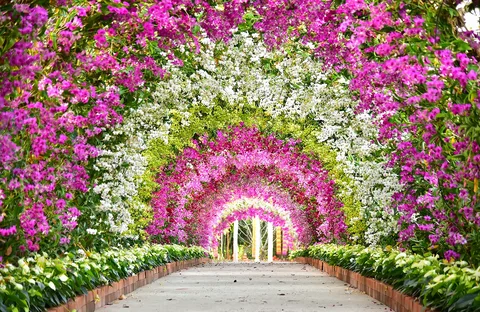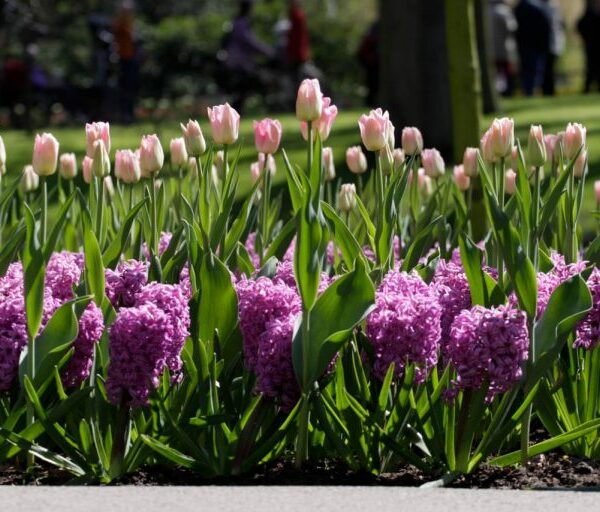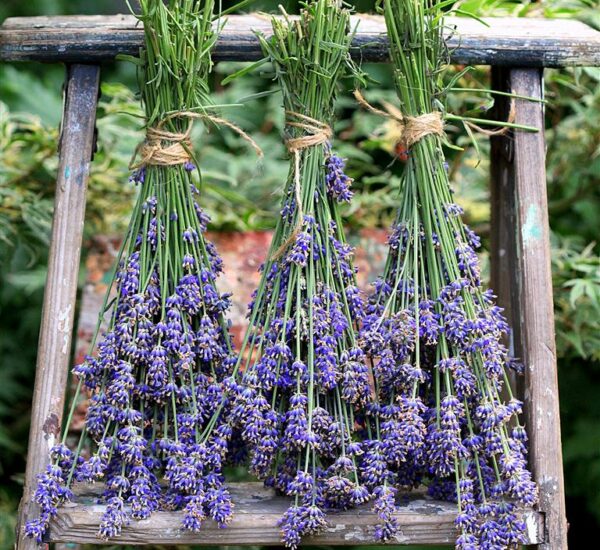Perennial flowers provide a colorful and enduring addition to your garden, returning year after year with minimal effort. In this expert guide, we will introduce you to 26 perennial flowers that are not only easy to grow but also reliable in their ability to return, supported by references from government sources, horticultural organizations, and academic experts.
Introduction to Easy-to-Grow Perennial Flowers
Discovering perennial flowers that require little maintenance and reliably reappear in your garden is a joy for any gardener.
Coneflower (Echinacea spp.)
Coneflowers are drought-tolerant and attract pollinators with their striking, daisy-like blooms.
Black-Eyed Susan (Rudbeckia spp.)
Black-eyed Susans feature cheerful yellow or orange petals and are known for their resilience.
Daylily (Hemerocallis spp.)
Daylilies come in various colors and are renowned for their adaptability and profuse blooms.
Russian Sage (Perovskia atriplicifolia)
Russian sage is a low-maintenance perennial with fragrant, silvery-gray foliage and blue-purple spikes.
Hosta (Hosta spp.)
Hostas are shade-loving perennials with diverse foliage patterns, offering texture and color.
Coreopsis (Coreopsis spp.)
Coreopsis, or tickseed, produces bright yellow, red, or pink flowers, attracting butterflies.
Salvia (Salvia spp.)
Salvias offer spikes of tubular flowers in various hues, providing nectar for pollinators.
Sedum (Sedum spp.)
Sedums are drought-tolerant and low-growing, with clusters of star-shaped flowers.
Bee Balm (Monarda spp.)
Bee balm features unique, tubular flowers and is a magnet for bees and butterflies.
Lavender (Lavandula spp.)
Lavender offers fragrant foliage and spikes of purple, pink, or white flowers.
Phlox (Phlox spp.)
Phlox provides colorful, fragrant flower clusters and is excellent for borders and cut arrangements.
Lamb’s Ear (Stachys byzantina)
Lamb’s ear boasts velvety silver leaves and spikes of small, purple-pink flowers.
Bleeding Heart (Dicentra spectabilis)
Bleeding hearts offer heart-shaped blooms in shades of pink and white, perfect for shade gardens.
Japanese Anemone (Anemone x hybrida)
Japanese anemones produce daisy-like flowers in shades of pink or white, ideal for late-season color.
Catmint (Nepeta spp.)
Catmint is a hardy, aromatic perennial with spikes of blue or purple flowers.
Yarrow (Achillea spp.)
Yarrow showcases feathery, flat-topped flower clusters in various colors, attracting pollinators.
Balloon Flower (Platycodon grandiflorus)
Balloon flowers have unique, balloon-shaped buds that burst into star-like blossoms.
Hellebore (Helleborus spp.)
Hellebores, or Lenten roses, offer elegant flowers in shades of white, pink, or purple.
Coral Bells (Heuchera spp.)
Coral bells provide colorful foliage and slender flower spikes, making them perfect for shade gardens.
Shasta Daisy (Leucanthemum x superbum)
Shasta daisies are classic perennials with white petals and a yellow center.
Butterfly Weed (Asclepias tuberosa)
Butterfly weed features vibrant orange, butterfly-friendly clusters and is essential for monarch butterflies.
Russian Coneflower (Rudbeckia laciniata)
Russian coneflower produces golden-yellow, daisy-like flowers on tall stems.
Penstemon (Penstemon spp.)
Penstemons offer spires of tubular flowers in a range of colors, attracting hummingbirds.
Siberian Iris (Iris sibirica)
Siberian irises showcase delicate blooms in shades of blue, purple, and white.
Blanket Flower (Gaillardia spp.)
Blanket flowers provide daisy-like blooms in vibrant hues, attracting pollinators.
Conclusion
These 26 perennial flowers make gardening a breeze with their easy care and reliable returns. Whether you prefer vibrant hues, fragrant blooms, or unique forms, these perennials, backed by horticultural experts and resources, offer a diverse array of options to beautify your garden year after year.
What are perennial flowers, and why are they a popular choice for gardeners?
Can you recommend specific perennial flowers that are known for their ease of cultivation and reliability in coming back each year?
What are the key factors to consider when selecting and planting these easy-to-grow perennials in the garden?
Do these perennial flowers require specific soil types or sunlight conditions to thrive, or are they versatile in their requirements?
When is the best time to plant these perennials to ensure a successful and perennial garden?
What is the typical blooming period for these perennial flowers, and how can I ensure a continuous display of color throughout the growing season?
Are there any special care or maintenance tips for these low-maintenance perennials?
Can I use these perennial flowers for cut flower arrangements, and do they attract pollinators or wildlife to the garden?
How can I incorporate these easy-to-grow perennials into landscaping and garden design for a stunning and reliable display?
Are there any considerations for winter care or protection in colder climates to ensure the perennials return each year?
- Tennessee’s THC Beverage Market - June 5, 2025
- Top THC Infused Seltzers in Delaware - June 5, 2025
- Florida’s Hottest THC Infused Beverages - May 28, 2025




